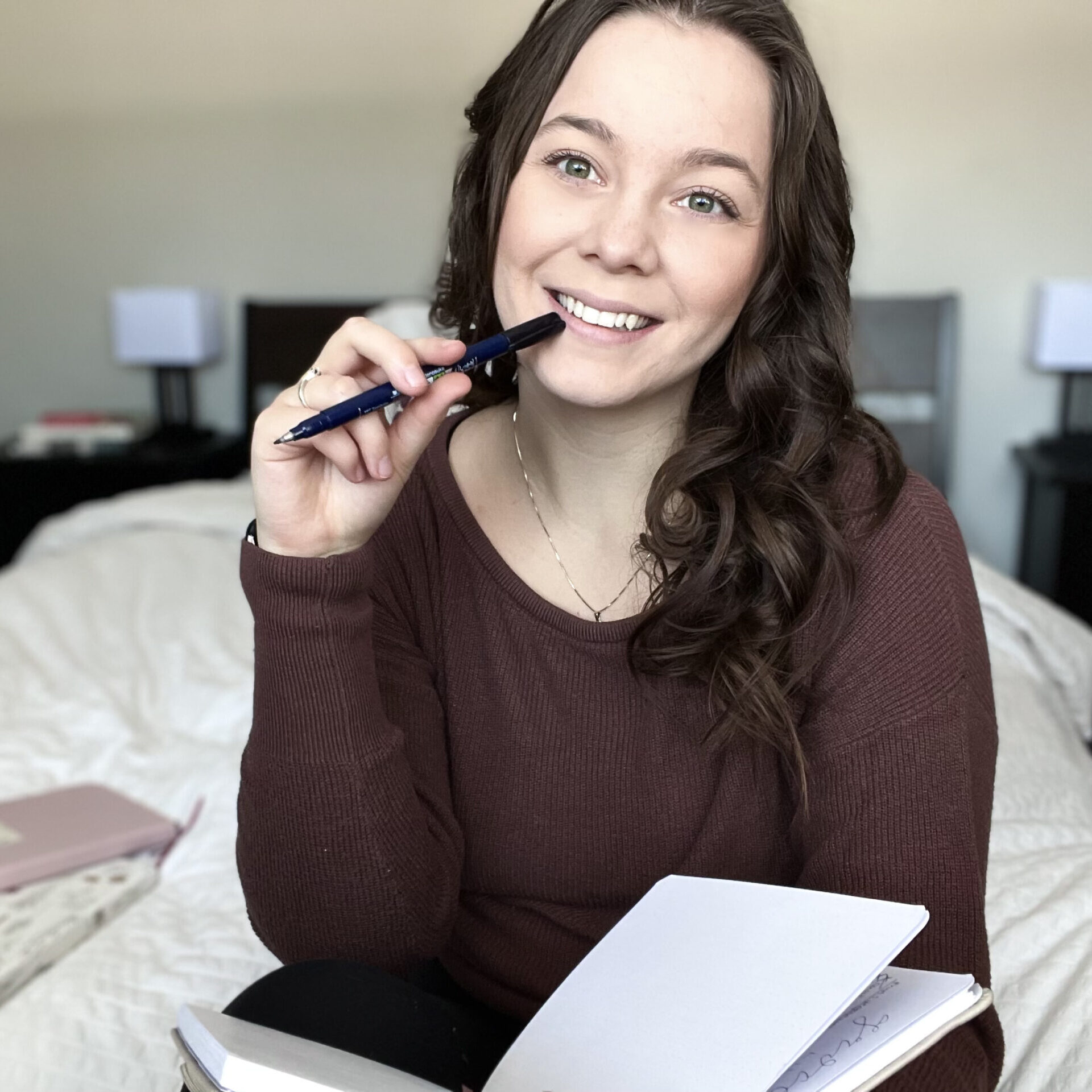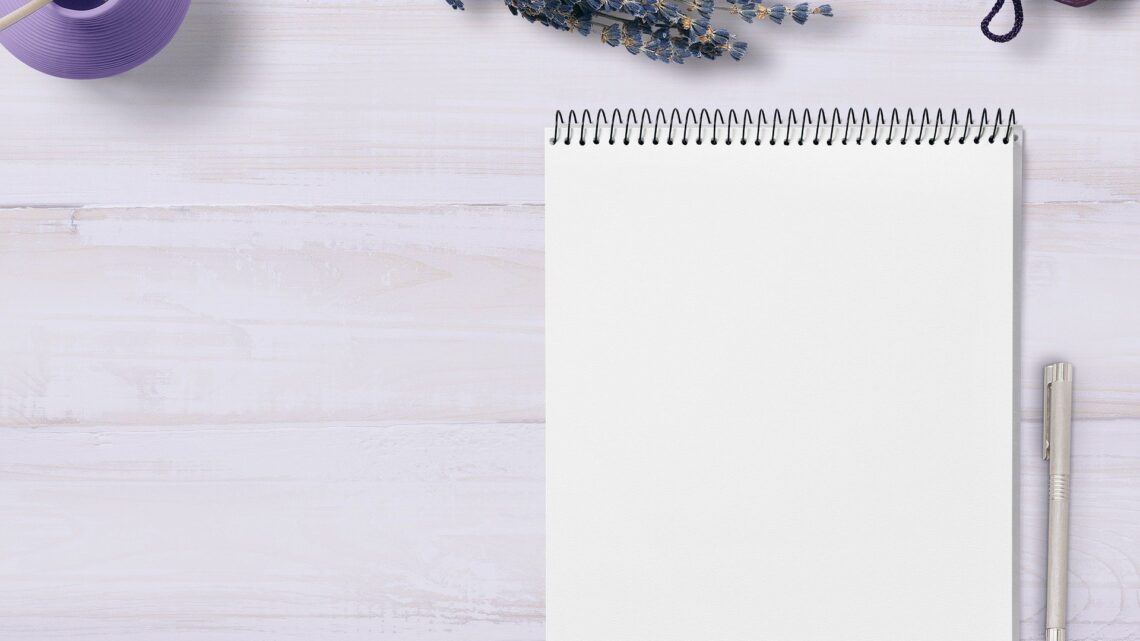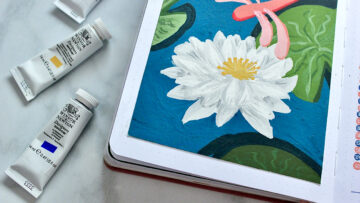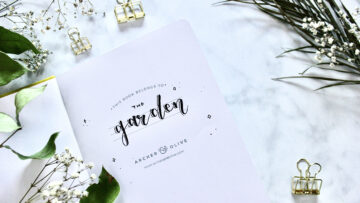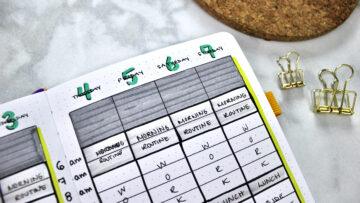The author of “The Bullet Journal Method” Ryder Carroll states bullet journaling is to track the past, order the present and design the future. I could not describe bullet journaling in a better way because truly that is what it is. But the real question is what EXACTLY is bullet journaling? Is it something that would benefit my life? And if so, how do I start a bullet journal?
Quick back story: I have been bullet journaling on and off (currently on) for the last 4 years. I’ve had a love hate relationship with this method of tracking my life. At some points it feels motivational to see all the things that I’ve accomplished in a day, month or even over the year. To be able to look back on all the memories that I’ve had. However, in the moment it can sometimes be overwhelming when I don’t get done what I want in a day and there is clear proof of just that.
Over the years of this on and off again journaling I have found a way that best helps me add productivity and mindfulness to my day; with that sweet spot of intentionality I seem to crave. If this is the first time that you are thinking of starting a bullet journal, hi! Thank you for stopping by and I hope that this blog helps you figure out the never ending ways to use a bullet journal to help you find that sweet spot you crave.
First and foremost, what you need to start a bullet journal is simple:
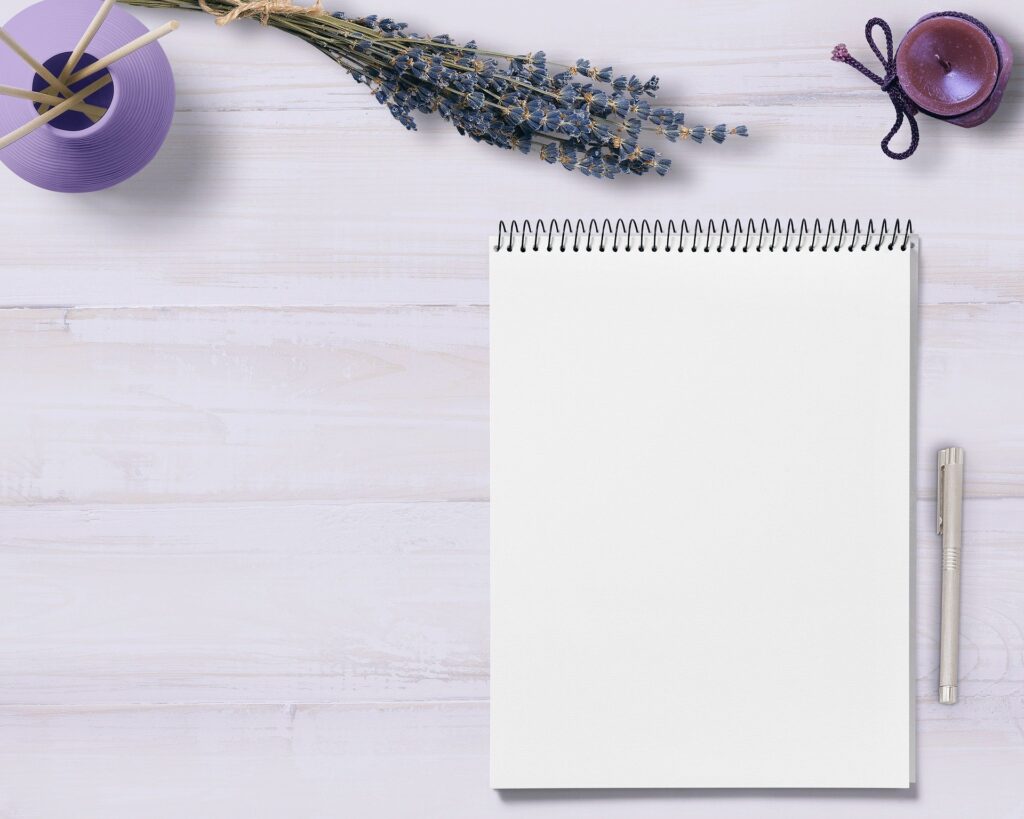
- Journal – It can be lined, grid or blank paper but the one that I tend to use is a dotted notebook because it allows for the most flexibility. I am not confined to a certain size of lettering like lined or grid paper. And let’s be honest if I used blank paper the first part of my sentence would start at the top of the page and slowly move down at a 45-degree angle.
- A writing item – grab that ball point pen from the counter and you’re good to go!
Now that you have the items to start a bullet journal the question becomes what to include in a bullet journal? That is the beauty of it, literally anything you can think of can go in a bullet journal. I started off by keeping track of my daily to do lists, adding in items like appointments, project due dates, grocery lists until it began to morph into what it is today, a creative space.
To understand a bullet journal effectively there needs to be legend, just like you’d find on a map. This however is a map to your journal and in the bullet journal community is called “A Key”. To keep is simple here are the ones that most people start with:
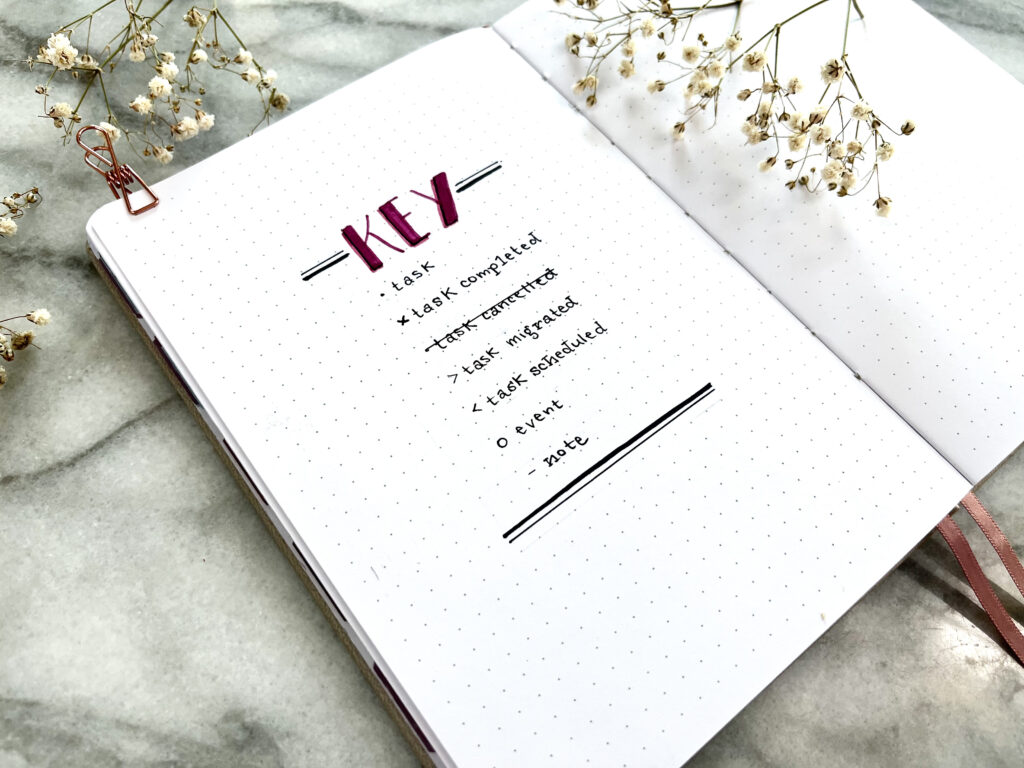
- Task
X Task Completed
Task Cancelled
> Task Migrated
< Task Scheduled
o Event
– Note
Let’s deep dive a little more into what exactly each of these icons mean. Tasks are something that requires action. A task completed… yay you’ve checked a to do off your list! For a cancelled task this means that it is no longer relevant to your day and does not require action; this could be a cancelled class or meeting. A migrated task is when a task is moved forward to the next month or into a collection. An example of this is one of your tasks could be to pick up a new book. After that book is purchased, it can be migrated to a “Books To Read” collection. A task scheduled is for an action that will happen in the future. So why the left arrow? Because you are moving the task to your future log which sits at the front of the book (stay tuned for more on that later). Events are for experiences that are either preplanned, like a birthday party, or to keep track of a memory that happened that day (surprised with flowers at work). A note is used to add more information to either a task or event.
I started out with the most basic keys and overtime began to add in more icons to suit my life as a student (a square for an assignment, triangle for a quiz and so on and so forth). I encourage you to do the same and find what fits your life the best. I would recommend writing this on a piece of paper to reference when first starting out. For me, I wrote this in on the inside cover of my bullet journal.
With the basics understood it is time to open up that journal and begin the process. If you purchased a journal specifically made for bullet journaling often it will come with an index at the front of the book. Here is where you can keep track of the different collections of spreads you create. A collection is organized similar information, with endless possibilities. Collections constantly change month to month or each year depending on what needs you have. For example, a collection I would include year round would be a list of books to read; however, I can also create seasonal collections like “20 things to do during the summer”. Whatever page you create these collections then get referenced on the index with a name and page number.
Remember how I mentioned that I use my bullet journal to track my daily life? That is called a daily log. In its truest form it is a place where you can plan out your day with as little or as much space required to do so.
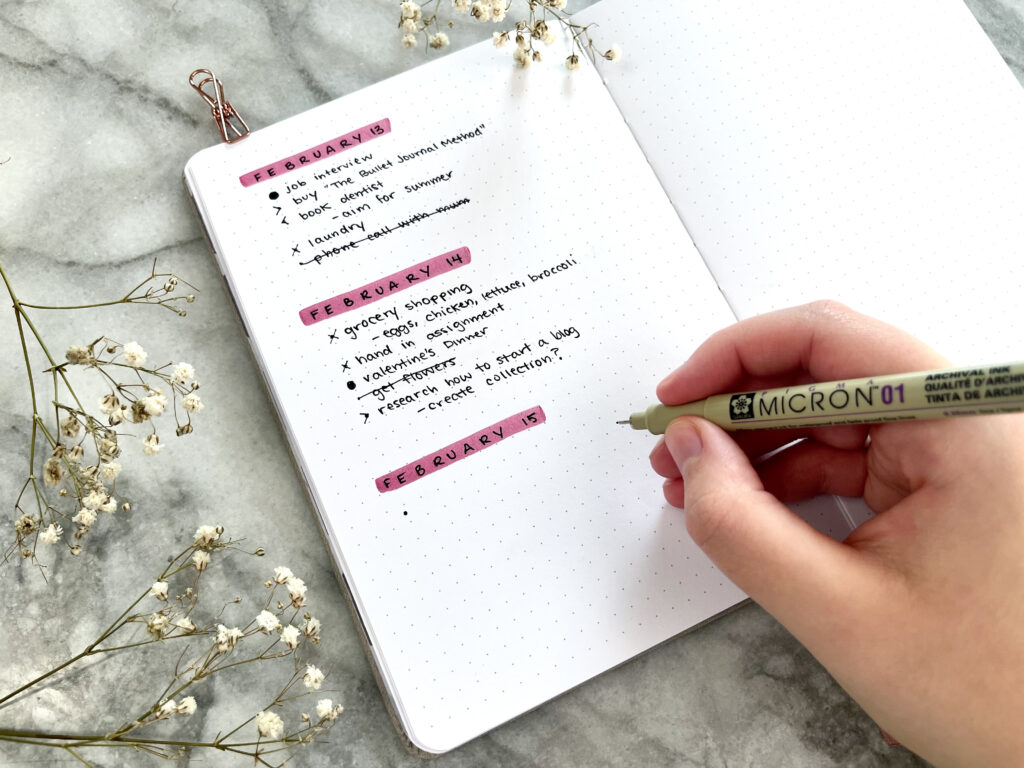
My tips when writing information down is to keep it short and keep it relevant. I like to use my daily log for what I call must do tasks. I don’t generally like to use space for things like shower, eat dinner, walk the dog or regular habits in my life. Instead, the tasks I include are not daily recurrences. Things like appointments, work tasks, family or friend events, assignments if you’re a student, vacation plans – should I go on?
A daily log is only part of the equation. It focuses solely on tracking the todays. What if you book an appointment for a few weeks out or even a few months? That is where both future log and monthly logs come into play.
A future log is kept at the beginning of a journal and is used for scheduled tasks. That appointment that you book in the future or a family birthday a few months from now. Here is where your life is organized and ensuring that no double bookings occur (how awkward would that be). This log is created once covering the upcoming year.
A monthly log is a calendar style layout where tasks are migrated to for completion in the current month. Each month I create a layout to help me track what is upcoming and keep note of any changes that could occur. Information to fill my monthly calendar comes from both my daily logs and the future log. Prescheduled events created in previous planning (future log) and migrated daily tasks will help give an idea to what is upcoming in the month.
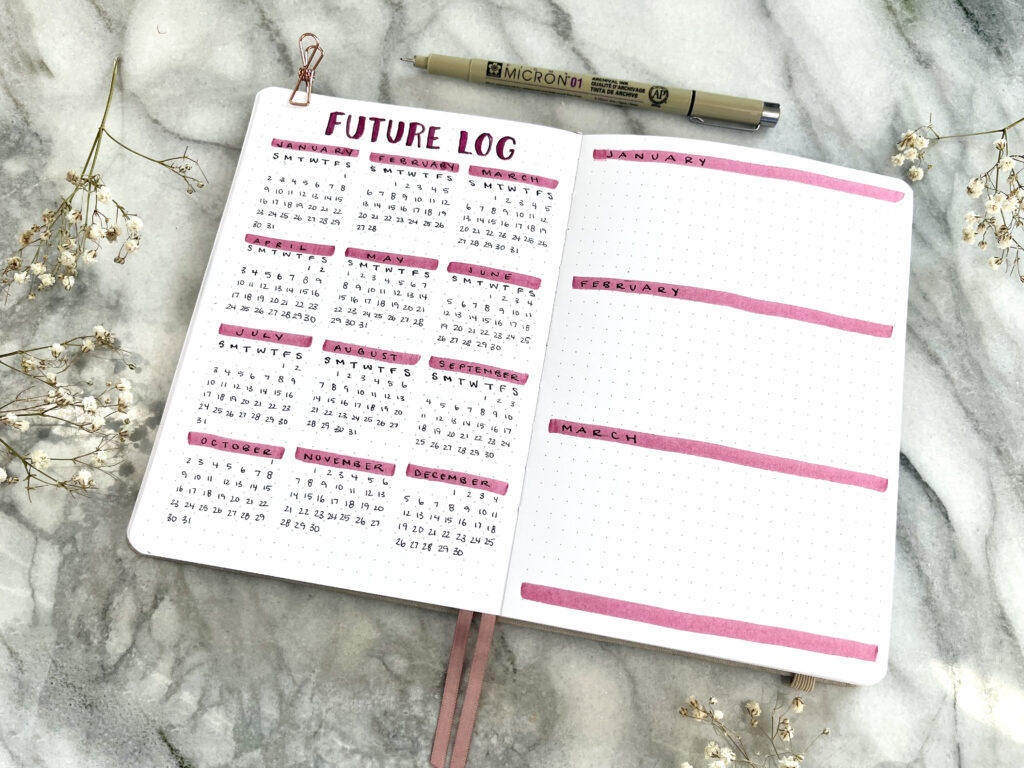
A LOT of information on what it looks like to start a bullet journal so if you have any questions, please let me know I am here to help! If there is anything to take away from journaling it is consistency and awareness. The best time for me to stay consistent is my lunch break where I take 10-15 minutes to write out what I want to get done for the day. Pick a time that suits your lifestyle as we are not all the same. On that note remember that this is your bullet journal journey, and it will be different than mine or anyone that you talk to. It is a place for you to figure out what works best for you to add more intentionality to your life!
My Favourite Items When Starting A Bullet Journal:
- Scribbles That Matter Dotted Bullet Journal – (US) https://amzn.to/3oDjWee
- Tombow Fudenosuke Brush Pen 2 Pens Hard and Soft Tip Black – (US) https://amzn.to/3mQKHtV (CAN) https://amzn.to/3ugxywY
- Sakura Micron 6-Piece Set – (US) https://amzn.to/30oGBSl (CAN) https://amzn.to/39ljTf7
- Crayola Supertips 50 pack – (US) https://amzn.to/3BLsqVm (CAN) https://amzn.to/2Q0GMye
